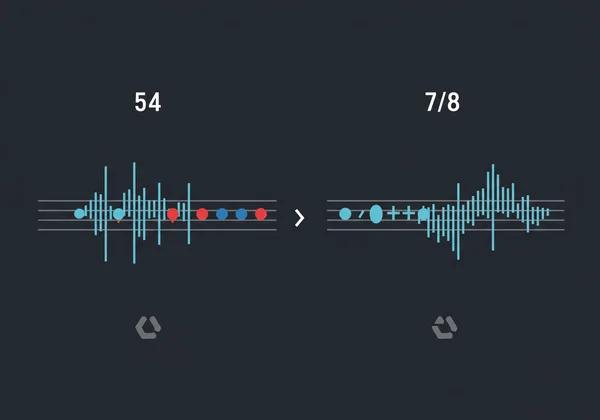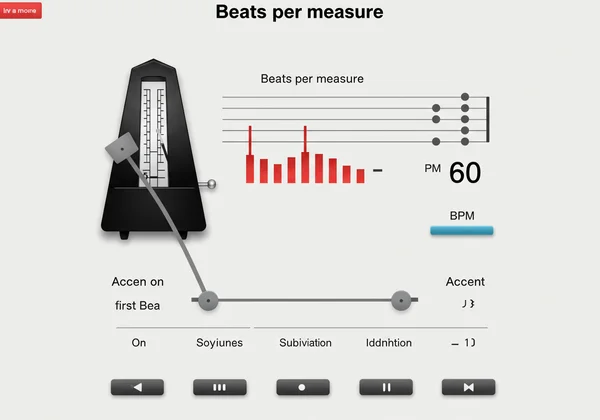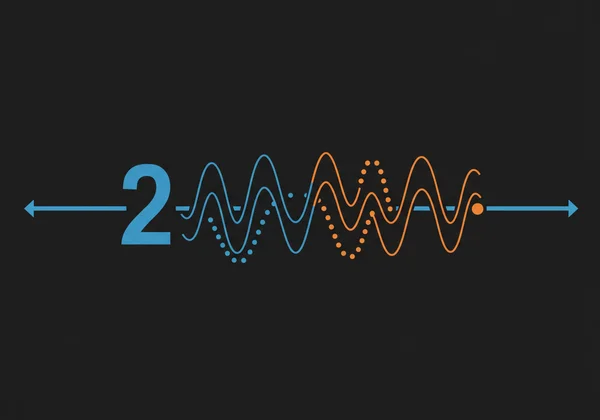Master Odd Time Signatures: Your Free Online Metronome Guide
Are you tired of your music sounding predictable? Do you crave the rhythmic complexity found in jazz, progressive rock, or world music? Odd time signatures can unlock incredible creative possibilities, but mastering them often feels daunting. This guide will show you how to confidently navigate and practice unconventional meters like 5/4, 7/8, and 11/8 using a powerful, customizable metronome online – turning confusion into rhythmic clarity. How can a metronome improve my playing of complex time signatures? With the right tool, you can break down any rhythm into manageable parts, build a rock-solid internal clock, and finally play those challenging pieces with confidence and groove.
The key isn't just about counting; it's about feeling the pulse. A flexible rhythm practice tool allows you to set specific accents and subdivisions, guiding your ear and hands until the rhythm becomes second nature. This guide will walk you through the theory, setup, and advanced strategies to make you a master of odd meters.

Decoding Complex Time Signatures: Why Go Beyond 4/4?
Most of the music we hear is in common time, or 4/4. While this meter is the backbone of countless genres, exploring complex time signatures opens a new dimension of expression. It allows you to create tension, surprise, and a unique rhythmic feel that sets your music apart. Venturing beyond 4/4 is a hallmark of musical maturity and a crucial step for any serious musician.
What Defines an Odd Time Signature? Understanding Irregular Meter
At its core, a time signature's top number tells you how many beats are in a measure. Common time signatures (like 2/4, 3/4, and 4/4) have an even number of beats that feel symmetrical and are easy to count. An odd time signature, also known as an irregular meter, features an odd number of beats per measure, such as 5, 7, 9, or 11.
The secret to feeling these meters is to stop thinking of them as one long, awkward count. Instead, they are almost always composed of smaller groups of twos and threes. For example, 5/4 is typically felt as (1-2-3, 1-2) or (1-2, 1-2-3). Similarly, 7/8 is often felt as (1-2, 1-2, 1-2-3). Understanding these groupings is the first step toward mastery.

The Musical Freedom and Benefits of Mastering Advanced Rhythms
Learning to play in odd time signatures does more than just expand your technical skills. It fundamentally improves your overall sense of rhythm. By practicing advanced rhythms, you develop a more profound internal pulse, enhance your listening skills, and gain the confidence to tackle any piece of music, no matter how complex it seems.
This skill is invaluable for improvisation, composition, and playing in genres that thrive on rhythmic sophistication. From Dave Brubeck's "Take Five" (in 5/4) to Pink Floyd's "Money" (in 7/4), odd meters have fueled some of music's most iconic moments. With a reliable free metronome, you can begin incorporating this exciting element into your own playing.
Setting Up Your Online Metronome for 5/4, 7/8, and More
Theoretical knowledge is one thing, but practical application is where real progress happens. A generic metronome that only clicks in 4/4 won't cut it. You need a highly customizable online metronome that allows you to specify the exact number of beats, accents, and subdivisions. This is where our online metronome truly shines, offering the precision needed for advanced practice.
Customizing Beats: Your 5/4 Metronome Practice Blueprint
Let’s start with 5/4 time. This is often the first odd meter musicians learn. Follow this simple blueprint to set up your practice session:
- Navigate to the online metronome.
- Set the "Beats" per measure to 5.
- Ensure the "Accent" on the first beat is turned on. This is crucial for feeling the start of each measure.
- Start at a slow BPM, perhaps 60.
- Listen to the pattern: ONE-two-three-four-five.
- To internalize the common 3+2 feel, mentally group the clicks: (ONE-two-three) (four-five). Clap or tap this rhythm until it feels comfortable.
This process of customizing beats transforms an abstract concept into a tangible, audible pattern you can practice against.

Mastering 7/8 Rhythm: Feeling the Subdivisions with Visual Cues
The meter 7/8 can be trickier because the eighth note gets the beat, making it feel faster. The key is breaking it down into its most common grouping: 2+2+3. A metronome with clear visual cues is incredibly helpful here.
Using the tool, you can set the beats to 7. While you can't create sub-accents yet, you can use the subdivisions feature to feel the underlying pulse. Select the eighth-note subdivision to hear every beat clearly. As you listen to the seven clicks, internally chant the pattern "TA-co TA-co TA-co-bell" or "ONE-two ONE-two ONE-two-three." This helps your brain lock into the irregular groove of the 7/8 rhythm.
Exploring Other Unconventional Meters (e.g., 11/8, 9/8)
Once you're comfortable with 5 and 7, the same principles apply to even more unconventional meters. A meter like 11/8 might be grouped as (2+2+2+2+3), while 9/8 can be a straightforward (3+3+3) like a waltz on steroids, or a more complex grouping like (2+2+2+3).
The power of a flexible time signature metronome is that it can accommodate all these variations. You can set the beats up to 12, allowing you to explore virtually any time signature you encounter in modern or classical music. Experiment with different groupings to see how the feel of the rhythm changes.
Advanced Rhythm Practice: Strategies for Polyrhythm Mastery
Mastering odd time signatures is a gateway to even more complex rhythmic concepts like polyrhythms. This is where your rhythmic training goes to the next level. Effective polyrhythm practice requires impeccable timing and a deep understanding of subdivisions, all of which are honed by diligent metronome work.
Slow and Steady: Building Your Internal Clock for Complex Rhythms
The single most important rule for practicing complex rhythms is to start slow. Your brain needs time to process the new patterns. Setting your BPM to a low value (50-70 BPM) allows you to focus on accuracy without feeling rushed.
This deliberate, slow practice is how you build a reliable internal clock. Your goal is to internalize the rhythm so completely that you no longer need to consciously count it. As you become more accurate, you can gradually increase the tempo by 2-4 BPM at a time. This methodical approach ensures you build a solid foundation.
Layering Rhythms: Integrating Polyrhythms with Your Metronome
A polyrhythm is the simultaneous use of two or more conflicting rhythms. The classic example is playing three notes evenly over two beats (a 3:2 polyrhythm). To practice this, you can set your metronome to a simple 2/4 or 4/4.
First, lock in with the primary beats (the "2"). Once that feels steady, try to overlay a three-note pattern (a triplet) across those two beats. This technique of layering rhythms is challenging but incredibly rewarding. It forces you to develop true rhythmic independence and is a cornerstone of advanced jazz, classical, and metal drumming.

From Practice Room to Performance: Making Odd Time Feel Natural
Ultimately, we want to move past just hitting the right notes. We want to feel the music, to achieve true musicality that comes from within. The metronome is your training partner, but the final performance should feel fluid and natural.
One advanced technique is to use your metronome as a "rhythm checker." Practice a passage with the click, then turn the metronome off for a few measures and try to maintain the same tempo. Turn it back on to see if you've sped up or slowed down. This helps you transition from relying on the metronome to trusting your own internal pulse, making these complex rhythms a natural part of your musical vocabulary.
Your Journey to Rhythmic Freedom Starts Here
Ready to become a more versatile, confident, and creative musician? Diving into odd time signatures will fundamentally transform your playing. It pushes you beyond your comfort zone and deepens your fundamental understanding of rhythm. The key to this journey is consistent practice with a tool that is as precise and flexible as you need it to be.
This free online metronome is designed for this exact purpose. With its fully customizable beat counts, accents, and subdivisions, it’s the perfect partner for tackling everything from 5/4 to complex polyrhythms. Stop letting tricky rhythms hold you back. Start your practice today and unlock a new world of musical expression.
Frequently Asked Questions About Odd Time Signatures & Metronomes
How can a metronome improve my playing of complex time signatures?
A metronome provides an objective, unwavering time reference, which is essential for learning unfamiliar rhythms. A customizable tool like ours lets you set the exact number of beats (e.g., 7 for 7/8) and accent the first beat, making the irregular pattern easier to hear and internalize. It removes guesswork and helps build accurate muscle memory from the very beginning.
What is a good tempo for practicing odd time signatures effectively?
What is a good tempo for practice? Always start slower than you think you need to. A range of 40-60 BPM is ideal for beginners tackling a new meter. This slow speed allows your brain to process the beat groupings (like 2+3 in 5/4) without feeling overwhelmed. Focus on perfect accuracy at a slow speed before gradually increasing it.
What does 4/4 time mean, and how is it different from 5/4 or 7/8?
What does 4/4 time mean? It means there are four beats in every measure, and the quarter note gets one beat. It creates a symmetrical, even pulse (1-2-3-4). In contrast, 5/4 and 7/8 are asymmetrical. 5/4 has five beats, felt as (1-2-3, 1-2), and 7/8 has seven faster eighth-note beats, often felt as (1-2, 1-2, 1-2-3). This asymmetry gives them their unique, compelling feel.
Can using "Tap Tempo" help me identify odd time signatures in songs?
Absolutely. If you're listening to a song with a tricky rhythm, using the Tap Tempo feature on our BPM counter is a great first step. Tap along with the main pulse of the music to determine its approximate BPM. Once you have the tempo, you can try to count the beats between the strongest accents to figure out if you're hearing an odd meter like 5, 7, or something else entirely.